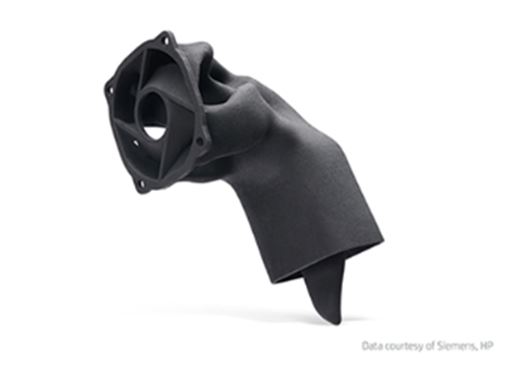HP ON HP: HOW 3D PRINTING CAN IMPROVE A 3D PRINTER
HP Inc. creates life-changing technology solutions for people and companies all over the world. Through its portfolio of printers, PCs, mobile devices, solutions, and services, HP engineers experiences that amaze.
The core printing engine of HP Multi Jet Fusion technology is powered by HP’s proprietary Thermal InkJet print heads. A series of ducts are often used to cool the print heads and achieve their optimum temperate range, enabling HP 3D printers to function reliably over time.
INDUSTRY
Industrial
SECTOR
Machinery and equipment
MATERIAL
HP 3D High Reusability2 PA 11
HP has already used Multi Jet Fusion to consolidate parts and reduce assembly and part costs for its own products. Now, thanks to the latest Siemens software (Siemens NX and Simcenter) it is possible to reinvent fluid management design by optimizing the flow efficiency of the intake duct.

With the new design, the duct performance (and therefore, its value) increased, with a 22.3% improved air mass flow1 —and without an increase to the cost.
In addition, the end-to-end solution enabled a 75% faster development time versus Injection Molding, with production lead time reduced from 4 months to 4 weeks.
1) 5.5 and 5.8 PSI for left and right air duct air mass flow with the HP Jet Fusion 5200 Series/optimized design vs 4.6 and 4.7 PSI with the previous design.
2) HP Jet Fusion 3D Printing Solutions using HP 3D High Reusability PA 11 provide up to 70% powder reusability ratio, producing functional parts batch after batch. For testing, material is aged in real printing conditions and powder is tracked by generations (worst case for reusability). Parts are then made from each generation and tested for mechanical properties and accuracies.